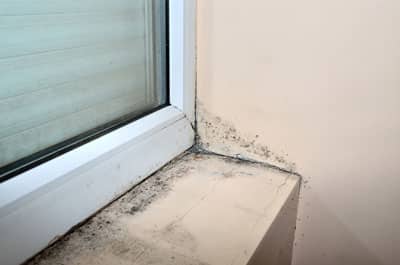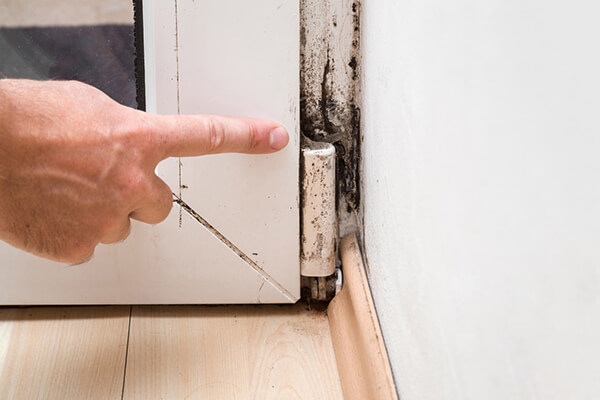Comprehensive Post Mold Remediation Procedures
Comprehensive Post Mold Remediation Procedures
Blog Article
Professional Tips for Post Mold And Mildew Remediation Success
In the realm of mold remediation, successfully eradicating mold is just half the fight; the real difficulty lies in preventing its reappearance. By adhering to expert tips and best practices, people can guard their rooms versus mold and mildew revival and maintain a healthy and balanced interior setting.
Display Moisture Levels Frequently
After completing mold removal treatments, maintaining optimal humidity degrees is crucial to avoid mold and mildew re-growth and ensure a healthy interior setting. High humidity levels over 60% produce a favorable setting for mold and mildew to flourish, making routine checking a proactive step to stop any kind of future mold and mildew concerns.
Additionally, developing a routine timetable for humidity checks, specifically in risky areas such as kitchen areas, washrooms, and basements, is an aggressive method to mold and mildew prevention. By constantly keeping an eye on humidity levels, residential or commercial property proprietors can efficiently mitigate the danger of mold and mildew reoccurrence and maintain a healthy interior environment post-remediation.
Conduct Thorough Inspections Post-Remediation
Adhering to the completion of mold removal procedures, it is necessary to carry out thorough evaluations to validate the efficiency of the removal process. These post-remediation assessments are vital in guaranteeing that the mold concern has actually been effectively attended to which there is no recurrence or staying mold and mildew development. Inspections ought to be performed by certified specialists that have know-how in recognizing mold and mildew and assessing indoor air quality.
During these evaluations, different techniques such as aesthetic evaluations, air tasting, and surface area tasting might be utilized to completely examine the remediated areas. Visual evaluations include an in-depth assessment of the facilities to look for any kind of noticeable indicators of mold and mildew growth or water damage. Air sampling aids in establishing the air-borne mold and mildew spore degrees, while surface sampling can spot mold particles on surface areas.
Implement Appropriate Ventilation Methods
After making sure the effectiveness of the mold and mildew remediation procedure through detailed evaluations, the following crucial action is to concentrate on executing correct air flow strategies. Appropriate ventilation is vital in preventing mold and mildew reoccurrence by regulating moisture levels and advertising air blood circulation.
Proper ventilation not only help in protecting against mold growth however additionally adds to the overall health and wellness and convenience of occupants. By guaranteeing appropriate air flow throughout the residential property, you can reduce the risk of mold regrowth and produce a much healthier living environment. Routine upkeep of air flow systems, including cleaning and filter substitutes, is critical to sustaining effective air flow. Consulting with cooling and heating professionals can supply more understandings into optimizing ventilation strategies for your particular building needs.

Use Mold-Resistant Products for Repair Works
To improve the long-lasting effectiveness of mold and mildew remediation efforts, integrating mold-resistant materials for repairs is vital in reducing the risk of future mold and mildew development. Mold-resistant materials are designed to stand up to moisture and prevent mold growth, making them an essential selection for areas susceptible to dampness and humidity. When fixing areas impacted by mold and mildew, utilizing products such as mold-resistant drywall, mold-resistant paints, and mold-resistant caulking can help protect against mold reappearance.
Mold-resistant drywall is an outstanding choice to conventional drywall in locations like restrooms and cellars where wetness degrees are higher. This kind of drywall has an unique covering that withstands mold development also when exposed to damp conditions. Additionally, making use of mold-resistant paints having antimicrobial agents can further inhibit mold development on walls and ceilings.
In locations where dampness is usual, such as restrooms and kitchens, utilizing mold-resistant caulking around sinks, windows, and tubs can help seal out water and protect against mold and mildew from taking hold in cracks and crevices. By investing in these mold-resistant materials throughout fixings post-remediation, you can dramatically lower the probability of future mold concerns and preserve a healthier interior atmosphere.
Maintain Cleanliness and Address Water Issues
Guaranteeing sanitation and immediately dealing have a peek at these guys with water issues are basic practices to promote in securing indoor rooms from mold reinfestation. After mold remediation, it is crucial to keep a clean atmosphere to avoid the regrowth of mold and mildew (After mold remediation). Routine cleansing, dusting, and vacuuming can assist remove any type of lingering mold and mildew spores and prevent them from multiplying and settling. Furthermore, maintaining interior spaces completely dry and addressing any type of water concerns promptly is necessary in mold and mildew prevention. Leakages, water breach, or high humidity levels can develop the perfect breeding place for mold and mildew, so it is important to deal with any type of water-related troubles instantly.
To preserve tidiness, think about making use of HEPA filters in vacuums and air purifiers to trap mold spores and avoid their flow airborne. Furthermore, making sure appropriate air flow in areas susceptible to moisture buildup, such as shower rooms and kitchen areas, can assist keep humidity hop over to here levels in check. By staying attentive about cleanliness and attending to water concerns promptly, you can efficiently avoid mold reinfestation and keep a healthy and balanced indoor atmosphere.
Conclusion

In the world of mold removal, effectively removing mold is just half the battle; the true challenge lies in stopping its reappearance. After completing mold and mildew removal procedures, maintaining ideal moisture degrees is vital to protect against mold and mildew re-growth and guarantee a healthy and balanced indoor environment. High moisture degrees over 60% create a helpful environment for mold and mildew to flourish, making normal checking a proactive procedure to protect against any type of future mold problems.
To enhance the long-lasting performance of mold and mildew remediation efforts, including mold-resistant products for fixings is go vital in minimizing the threat of future mold and mildew growth. After mold remediation, it is important to preserve a clean atmosphere to stop the regrowth of mold.
Report this page